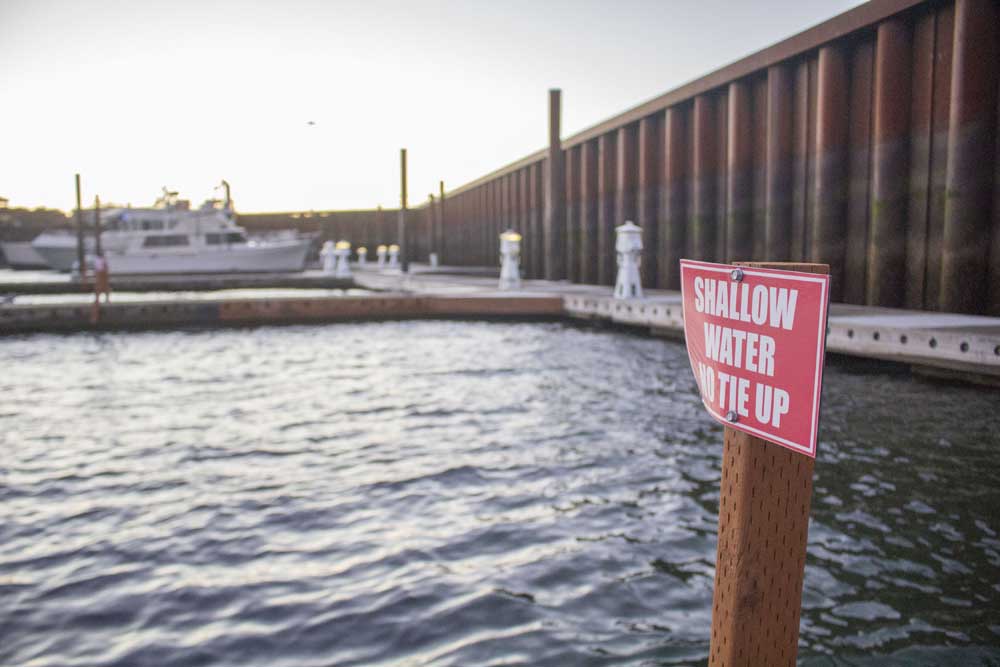Our View: Port’s strategic plan should be transparent
Published 12:30 am Thursday, September 26, 2019

- Port commissioners should be honest about the agency’s past.
The Port of Astoria’s strategic business plan should tell the unvarnished truth about the agency’s troubled past.
Trending
We understand that some Port commissioners might think it is self-defeating to detail financial and management blunders in a document meant to set the agency’s trajectory over the next few years. It isn’t.
The Port plays in front of two audiences: the people of Clatsop County, and the government leaders who control state spending in Salem.
Both audiences are well aware of the Port’s mistakes. No artfully worded, aspirational finance-speak can paper over the agency’s track record.
Trending
As Edward Stratton reported last week, Mary McArthur, the executive director of the Columbia-Pacific Economic Development District, who is helping the Port to update the strategic business plan, has taken a hard line on acknowledging the past.
Her update largely focuses on returning the Port to financial sustainability and public credibility. Port commissioners should follow McArthur’s lead.
While it may ease the sting for some in Astoria, leaving out messy facts, like the misuse of state grants meant for Pier 2, will not help convince anyone the Port has turned a corner.
Dave Harlan, the ports manager for Business Oregon, and a former marketing manager for the Port of Astoria, knows better. State Sen. Betsy Johnson, D-Scappoose, and the co-chair of the Joint Committee on Ways and Means, knows better.
Dirk Rohne, the Port Commission’s president, had it right when he said: “We want to put ourselves in a position where we can regain a relationship with the state of Oregon. So I’m all in favor of keeping the good, the bad and the ugly in this plan.”
The strategic business plan should reference the most recent challenges at the Port and the most pressing financial issues the agency needs to resolve.
But it would not hurt for all of us to take a moment to remember how we got here over the past decade.
Jim Knight stumbled as executive director because the Port needed a manager, not an economic development czar. Knight should be credited with trying to confront some of the accounting mishaps when he took over in 2014 and for hiring competent staff. But his decision-making, particularly on the Astoria Riverwalk Inn, was questionable.
People might forget that Knight was brought to Astoria as a change agent. “Jim Knight is the right person to help the Port improve its credibility and its standing in the community,” John Raichl, who led the Port Commission, said at the time.
Knight arrived after a trio of short-term directors — Herb Florer, Hank Bynaker, Michael Weston — managed the agency after Jack Crider’s departure in 2012.
Crider’s four-year tenure as director was a relatively stable respite after Peter Gearin’s spectacular implosion.
Before the aura around Gearin’s entrepreneurial acumen was punctured, he engineered a covert lease of Port land on the Skipanon Peninsula in Warrenton for a liquefied natural gas project and dangerously leveraged the agency’s assets with loans to spur economic development.
Gearin, who led the Port for eight years, eventually pleaded guilty to a felony violation of the federal Clean Water Act for breaking the terms of a federal dredging permit.
“As a result of both real and perceived mistakes made in the past, many within our community have lost confidence in the ability of the Port to carry out its mission in a responsible manner,” Port Commission President Don McDaniel said on the day Gearin was fired in 2007. “It is the hope of the commissioners that the Port can once again gain the trust and support of the community.”
Sound familiar?
If Port commissioners are serious about restoring the agency’s credibility, they should not shrink from being honest about the past in the strategic business plan.









